Fontana, CA Pollen and Allergy Report for Summer 2023
Pollen Allergy Trends in Fontana, CA
When is pollen lowest in Fontana, CA?

February
Lowest month total PPM
Avg. PPM
When is pollen highest in Fontana, CA?

March
Highest month total PPM
Avg. PPM
How does pollen in Fontana, CA compare to California?
Fontana has a lower average PPM than the state of California.
Fontana yearly avg PPM:
California yearly avg PPM:
How does pollen in Fontana, CA compare to the USA?
Fontana has a lower average PPM than the USA.
Fontana yearly avg PPM:
USA yearly avg PPM:
Is pollen worse this year in Fontana, CA?
Spring 2023 was better than spring 2022.
Spring 2023 PPM:
Spring 2022 PPM:
Average PPM in Fontana, CA
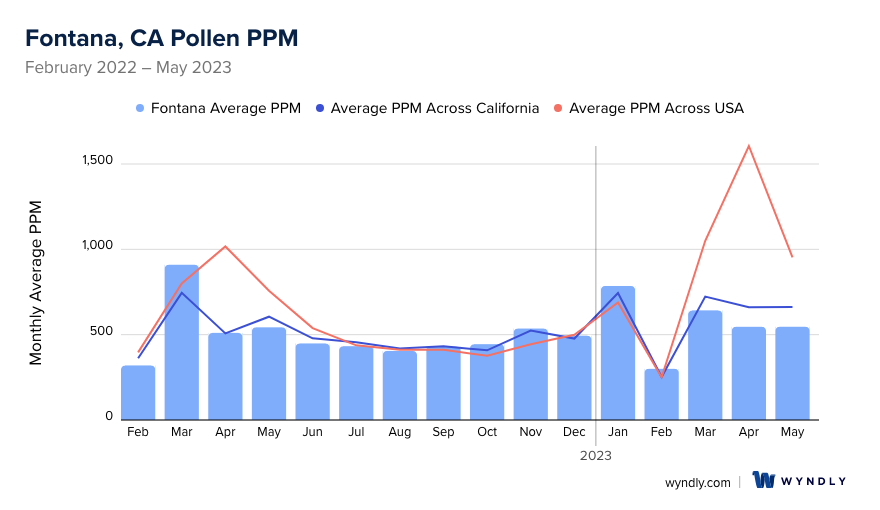
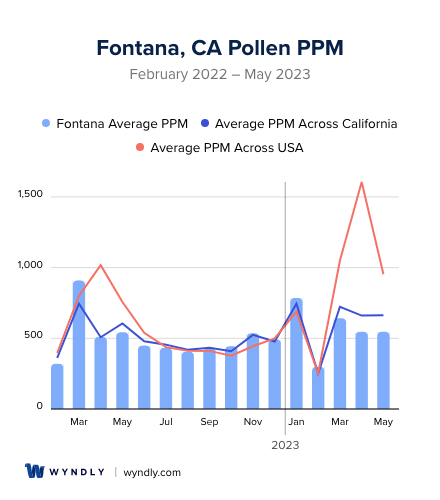
Fontana, CA Pollen and Allergy Breakdown by Month
Grass
When is grass pollen highest in Fontana, CA?
May has the highest grass pollen in Fontana, CA with an average PPM of
When is grass pollen lowest in Fontana, CA?
December has the lowest grass pollen in Fontana, CA with an average PPM of
Tree
When is tree pollen highest in Fontana, CA?
March has the highest tree pollen in Fontana, CA with an average PPM of
When is tree pollen lowest in Fontana, CA?
August has the lowest tree pollen in Fontana, CA with an average PPM of
Weed
When is weed pollen highest in Fontana, CA?
November has the highest weed pollen in Fontana, CA with an average PPM of
When is weed pollen lowest in Fontana, CA?
February has the lowest weed pollen in Fontana, CA with an average PPM of
Fontana, CA Pollen Monthly Breakdown by Pollen Type
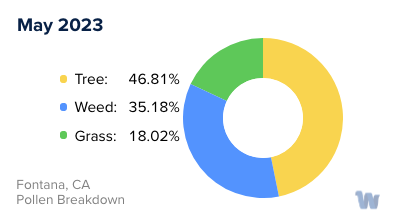
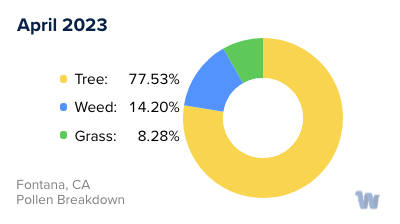
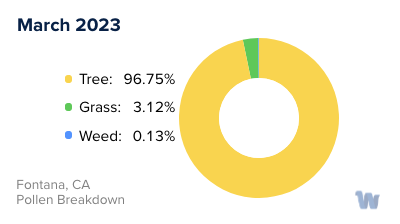
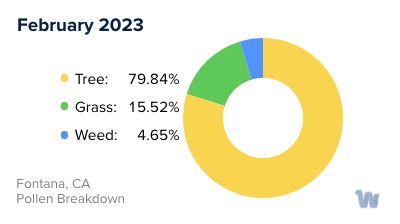
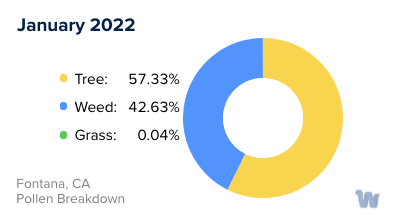
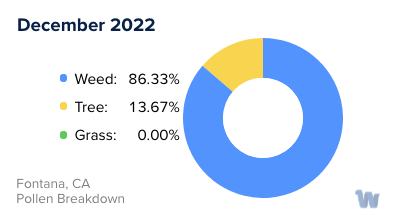
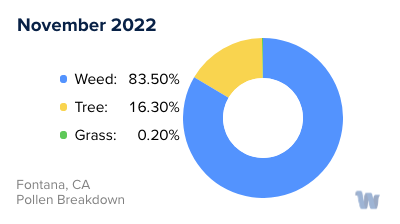
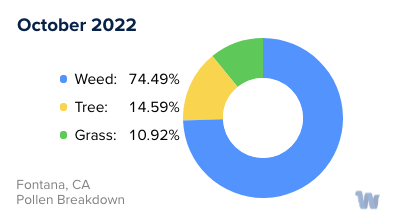
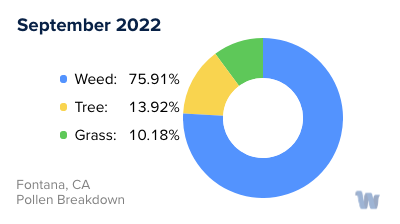
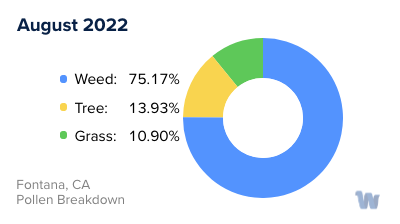
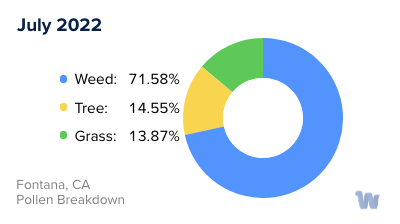
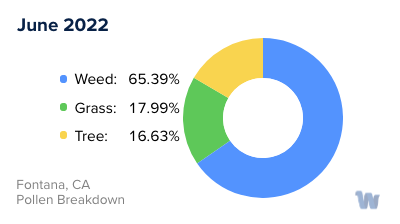
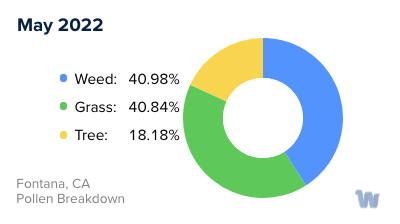
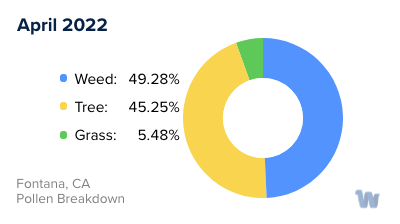
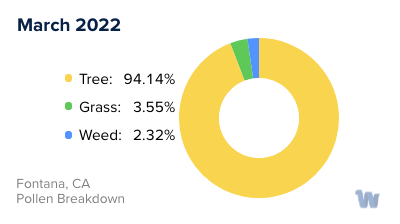
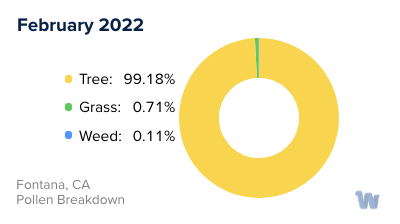
Pollen and Hay Fever in Fontana, CA
Living in Fontana, California can be a breath of fresh air with its sunny climate and diverse flora. However, for those susceptible to pollen allergies, also known as hay fever, the city's natural beauty may sometimes present a challenge.
In Fontana, there are several types of pollen that can trigger allergic reactions. The primary producers of these pollens are grasses, trees, and weeds. Some of the most common culprits include bluegrass, ryegrass, sagebrush, ragweed, and Russian thistle among the weeds. Among the trees, oak, olive, ash, cedar, eucalyptus, and mulberry can cause issues for allergy sufferers.
Depending on individual sensitivities, residents may experience allergy symptoms at different times of the year. This is because different plants release their pollen at different times, creating a variety of "pollen seasons". Generally, in California, the allergy season starts around late January and ends in early October or November.
Spring, summer, and fall are the main seasons when pollen allergies may flare up. More specifically, April, May, and September are months to watch out for, as these are typically when seasonal allergies are at their peak in California. During these months, pollen counts are highest, making it more likely for susceptible individuals to experience symptoms.
The diversity of plant life in Fontana and the surrounding areas in California means a variety of pollen types, each with its own season. This diversity is part of what makes Fontana a vibrant place to live, but it can also lead to extended periods of discomfort for those with pollen allergies. Even so, with an understanding of the types of pollen and their respective seasons, residents can better anticipate and manage their allergy symptoms.

